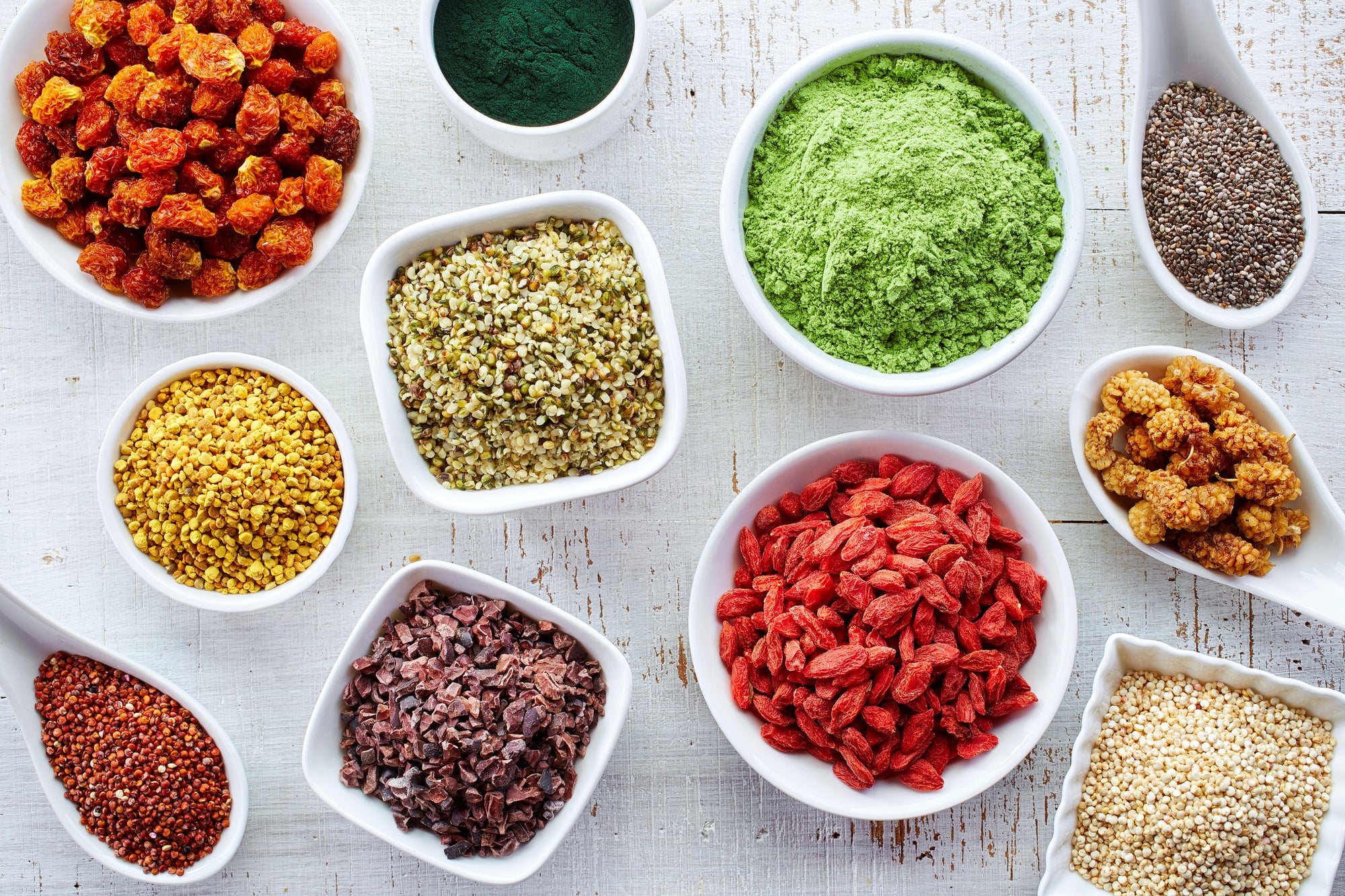
Catechins have found their place among health and wellness coaches and social media influencers worldwide. This may have something to do with the fact that these plant compounds have health benefits that can help support a thriving metabolism and protect your cells against damage.
Adding catechins to your diet can simply mean adding foods that contain them. But before you jump on the bandwagon, let’s look at what catechins are, why they are important, and how they relate to other plant-based compounds. We’ll explore the benefits and also discuss foods that contain catechins and how to easily add them to your daily diet.
Understanding Plant-Based Compounds
Plant-based compounds can be a little confusing (polyphenols, flavonoids, and catechins — oh my!). It’s complex to understand how they work in plants, much less what they’ll do for the human body once they’ve been extracted for our use.
Here’s a quick guide to get you on the fast track:
- Polyphenols. These are naturally occurring plant compounds found largely in fruits, vegetables, and grains. These compounds help protect plants against infections and UV rays. Polyphenols are classified into different groups based on their chemical structure. More than 8,000 polyphenolic compounds have been identified in various species of plants.
- Flavonoids. These are a class, or subgroup, of polyphenol compounds that have a 15-carbon atom structure. These compounds play numerous roles in plants, from being responsible for their color and aroma, to attracting pollinators, acting as UV filters and protecting against frost hardiness, drought resistance.
- Catechins. These are a class, or subgroup, of flavonoid compounds belonging to the flavanol subfamily of flavonoids.
In other words, all catechins and flavonoids are types of polyphenols. The world of phytochemicals may seem complex, but for our purposes of learning about catechins (which are both polyphenols and flavonoids), we’ll focus on how they help the human body when extracted from plant sources. It all starts with an understanding of antioxidants.

What Are Antioxidants?
One of the reasons the body ages is due to oxidative stress. This happens when unbalanced molecules, known as free radicals, attack healthy cells. Free radicals contain an uneven number of electrons, and they look for other molecules from which they can steal electrons.
When they find them, they rob them of their electrons, creating damage (oxidative stress) to the cell where the molecule lives. So why do free radicals exist in the body in the first place? Good question.
Some free radical activity occurs as a result of the body’s natural metabolic processes, but the body produces more when exposed to certain external toxins and other stressors. These include UV light, pollution, cigarette smoke, and even some household cleaning materials.
To protect the body against free radicals, we need antioxidants. These molecules act like bodyguards to our cells, offering up their electrons to free radicals so that the cells stay protected.
We need a good balance of antioxidants to free radicals in our bodies to help prevent oxidative stress. Oxidative stress is a key driver in premature aging, and it also underlies certain diseases like unregulated blood sugar, unhealthy blood pressure and cholesterol levels, cardiovascular disease, and other long-term illnesses. It’s also been linked to certain cognitive diseases, like Alzheimer’s.
Enter catechins.
What Are Catechins?
Catechins are classified as flavan-3-ols in the flavonoid family. This family of flavonoids is so named because of their chemical structure, which consists of a 2-phenyl-3, 4-dihydro-2H-chromen-3-ol skeleton. Catechins, in particular, are composed of two benzene rings and a dihydropyran heterocyclic ring (the C-ring) with a hydroxyl group on carbon 3.
That’s a really sciency way of saying that catechins are identified and classified by their chemical structure. There are several different types of catechins we can identify by their structure.
What Are The Different Types of Catechins?
There are a few different types of catechins, but the beneficial effects we’ll explore are directly tied to two specific catechin compounds: epicatechin and epigallocatechin-3-gallate.
- Epicatechin. These are found primarily in purple and red fruits, like apples, grapes, and raspberries, as well as in dark chocolate. This compound helps increase nitric oxide production in the body, improving endurance, blood flow, and vascularity.
- Epigallocatechin-3-gallate (EGCG). The most well-known type of catechin, EGCG, is found primarily in the Camellia sinensis plant, which can be dried to create black tea and green tea. However, it’s strongest in green tea and its super-concentrated sister supplement, matcha.
EGCG has a range of benefits that can support clean-burning energy, protect against oxidative stress, support brain health, and help you support a healthy heart.
Let’s dive into the benefits you can catch from catechins.
What Are the Health Benefits of Catechins?
What sets these phenolic compounds apart is their ability to support a myriad of bodily functions, particularly those involved with metabolic function.

Supports Heart Health
Research into catechins suggests that they may be one of the best ways to support heart health. Green tea catechins, in particular, help support healthy blood pressure levels, play a supportive role in the prevention of atherosclerosis, and help support vital endothelial cells with proper function.
Boosts Metabolism
Various metabolic functions (like glucose metabolism, cholesterol regulation, and blood pressure) are supported by the antioxidant effects of tea polyphenols. Literature reviews and clinical trials concerning catechins, although relatively new, suggest that they may be able to further modulate metabolic activity.
This is promising research because it means that catechins may play a heavier role in metabolism modulation and helping to support healthy weight than was previously assumed. More research will be needed, but in the meantime, we can grab the well-documented benefits of these compounds to support our bodies.
Provides Antioxidant Support
Just as we discussed previously, antioxidants can help prevent damage by reactive oxygen species (aka free radicals). Catechins have antioxidant properties that offer a protective effect for our bodies in two ways:
- Scavenging free radicals. The hydroxyl group in catechins act like scavengers, hunting down free radicals on a seek-and-destroy mission.
- Removing toxic metals. An imbalance of metals in the body can lead to oxidative stress. The phenolic groups in EGCG can chelate metals like iron, copper, chromium, and cadmium, which is a fancy way of saying that it finds toxic metals in the body and safely removes them.
These two specific functions make the antioxidant activity of catechins particularly useful and set them apart from other well-known antioxidants, such as vitamin C.
How Are Catechins Metabolized in the Body?
Just like other plant compounds, the body has to absorb and metabolize catechins. The main process by which green tea catechins are metabolized is through methylation, glucuronidation, and sulfation.
In vitro studies of metabolism in humans and animals have looked specifically at how hepatic (liver) metabolism affects catechins and whether or not they have a high level of bioavailability to the body.
Catechins are reduced into metabolites by certain enzymes. These metabolites are then distributed into various tissues in the body, where they are absorbed, further metabolized, and help perform various biological functions to help support human health.
Which Foods Are High in Catechins?

The highest amounts of catechins can be found in foods such as:
- Apples
- Blackberries
- Dark chocolate
- Red wine
- Cherries
- Green tea
These foods have high concentrations of catechins, but the highest concentrations can be found in green tea extract or matcha, as opposed to regular tea leaves.
This is because matcha is made by grinding full tea leaves into a powder that is fully consumed, which means you get all of the benefits of the leaves. There are other differences as well, such as the fact that matcha plants are shade-grown, resulting in higher nutrient profiles.
You can thank catechins, like EGCG and epicatechin gallate (ECG), for the healthy effects of green tea. Who knew that your morning tea consumption habit could actually provide such widespread health benefits?
Are There Any Side Effects of Catechins?
While most people will be able to consume catechins safely and avoid any side effects, high concentrations of them can result in gastrointestinal discomfort like gas, bloating, nausea, and vomiting.
Your body accepts dietary sources of catechins better than non-dietary sources (which makes them more bioactive), which is why it’s likely a better option for you to get your catechins from sources like matcha instead of an encapsulated supplement.
The Bottom Line
The protective benefits of catechins are helpful in preventing oxidative stress, helping our bodies maintain healthy hearts, and even helping boost metabolism. The benefits are better when they taste great, too. Adding catechin-rich foods to your diet can help boost your health and add flavor to your favorite dishes and snacks.
Feel like you don’t have the time to make a fruit salad? Make it easy on yourself. You can find catechins in our Focus Matcha Superblend, which is also a convenient way to incorporate other superfoods and nutrients into your diet with just one scoop. You can also find new ways to prepare foods that contain catechins on our blog.
Support your health, protect your heart, and work to prevent the negative health implications of oxidative stress with the health benefits of catechins in your diet.
